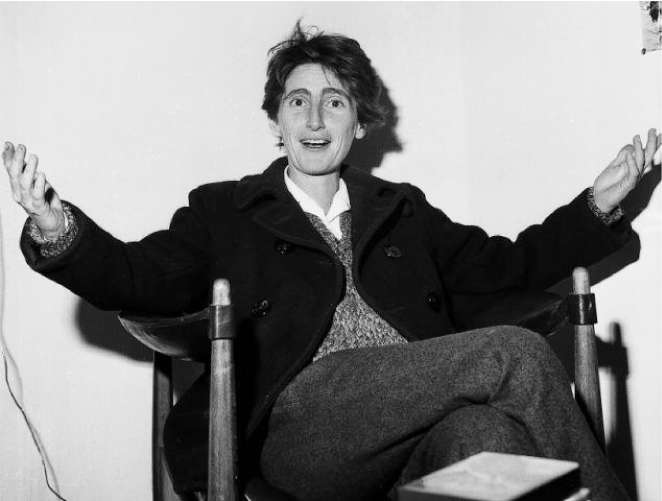The Duchess of Medina Sidonia: Aristocrat whose radicalism earned her the title 'Red Duchess'

When Spain's paramilitary policemen came across the Duchess of Medina Sidonia amidst a crowd of protesting agricultural workers, they greeted her with surprise and the respect her high rank demanded. "Doña Luisa Isabel! What are you doing here?" But when they realised she was part of the protest, the policemen pushed her around as roughly as they did her humbler comrades.
This privileged aristocrat had a rebellious spirit, perhaps to do with her mother's death when she was 10. She lived with her grandmother until leaving home at 18 to marry. Five years and three children later, her marriage ended. In the 1960s she was jailed for fiercely confronting Franco's dictatorship, and became known as the Red Duchess – a "title" she never accepted – for her radicalism.
She was born in Estoril, Portugal, her parents having gone into exile at the outbreak of the Spanish civil war. She was presented as a débutante in Estoril, together with Doña Pilar de Borbón, sister of Juan Carlos. Flourishing her republicanism, Luisa Isabel teased the future king of Spain as "Citizen Borbón". She also raised eyebrows in titled society by her vehement atheism.
Largely self-educated, she complained that her convent education equipped her only to be an accomplished society lady, and wife. But from childhood she was fascinated by historical studies, heraldry and ancient documents.
Her parents were Joaquí*Alvarez de Toledo, and Carmen Maura, daughter of the Duke of Maura; her great-grandfather, Antonio Maura, had been prime minister of Spain five times. Her grandfather, Gabriel Maura, encouraged her interest in historical research, fostering a lifetime of investigation among the medieval documents stored in her family's prodigious library in the ducal palace at Sanlúcar de Barrameda, near Cádiz. The palace houses reportedly the most important private archive in Europe, protected by the Medina Sidonia Foundation set up by the duchess in 1990.
When her father, the 20th duke, died in 1955, she inherited the title of Duchess of Medina Sidonia (Spain's first hereditary dukedom, granted in 1445, but whose origins date back to 1297), as well as Duchess of Fernandina, Princess of Montalbán, Marquess of Villafranca del Bierzo and Marquess of los Velez.
Investigations into her family's documents prompted her to write several controversial books and essays, many self-published, that argued among other heresies that African or Phoenician merchants, or possibly knights templar, reached America long before Columbus did in 1492. She published her thesis in 1992 in the books Africa versus América and No fuimos nosotros ("It wasn't us")
She also claimed to have documentary proof that the grandmother of her illegitimate ancestor Alonso Perez de Guzman, a 13th-century Spanish hero who fought against the Moors, was black. She wrote a biography of a later Perez de Guzman, commander in chief in 1588 of the Spanish Armada, based on her ancestor's letters with King Philip II.
In 1967, Luisa Isabel led a protest of labourers who claimed compensation for the contamination of their small plots in Palomares near Almería on the Costa del Sol. An American plane had accidentally dropped four thermo-nuclear bombs on the region a year earlier. She was jailed for a year, and wrote about her experience in My Prison (1972).
She wrote novels, including La Huelga ("Strike", 1967), about police brutality against striking vineyard workers, that was banned but clandestinely circulated, followed by La Cacería ("The Chase") that described the unlimited power exercised by landlords over their peasants in Andalusia.
In 1971 she wrote La Base about an American military base in Andalusia, and Palomares about the nuclear accident, and went into exile in the French Basque town of Hasparren rather than submit to another jail term. Her book, based on testimonies of 80 people affected by radiation, was not published until 2002. She complained that her work was constantly censored.
The duchess returned in 1976, after Franco's death, and was hailed as a symbol of Spain's emerging democracy. But she was detained again, accused of "violence against agents of authority" – which supporters found incomprehensible since she was fragile and only five feet tall – and given a suspended sentence of six months.
Henceforth she rarely left the 16th-century splendour of her palace in Sanlúcar, although she lived modestly, and spent her days in the library, studying and cataloguing an estimated six million documents in her private archive.
Controversial to the end, she is reported to have married her long-time secretary and president of the Medina Sidonia foundation, Liliana María Dahlmann, in articulo mortis, hours before her death.
Elizabeth Nash
Luisa Isabel Álvarez de Toledo y Maura, writer and historian: born Estoril, Portugal 21 August 1936; succeeded 1955 as Duchess of Medina Sidonia; married 1955 José Leoncio González de Gregorio y Martí (two sons, one daughter; marriage dissolved 1960); died Sanlúcar de Barrameda, Spain 7 March 2008.
Join our commenting forum
Join thought-provoking conversations, follow other Independent readers and see their replies
Comments